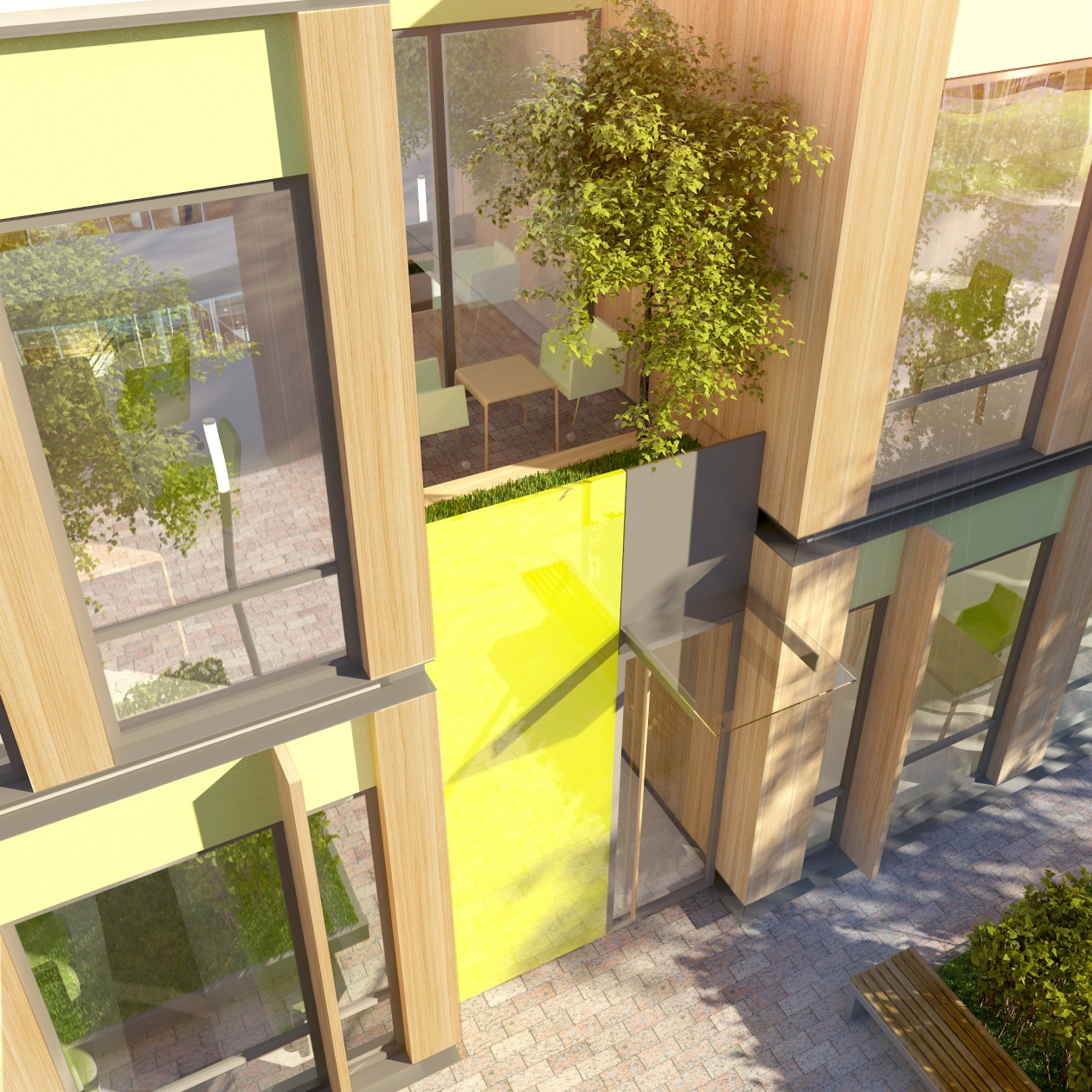The business park that was created by Sminex developers is located in
the southwest of the capital, in the Nauchny Driveway, not far away from
"Kaluzhskaya" metro station, in one of those few
The site of the future business park whose total area amounts to two
hectares, has the shape of an almost perfect quadrant with two small rectangles
glued to it from the north and from the east. Before the start of the
implementation of this project, it housed a five-floor brick house built back
in the 1970's in the best traditions of the Soviet office style, and two lines
of low-rise administrative buildings. It was this "raw material" that
the architects were to use in order to sculpt, in the renovation manner, a
completely new district, different in shape and essence.
Taking into consideration the peculiarities of the area, the architects
proposed for the future business park a "green", nature-oriented
image. The facade design is based on three materials - glass, ALPOLIC that
simulates wood, and the Finnish fiber-reinforced cement (
The tallest building of the park is the five-story volume stretched
along the Nauchny Driveway and separating the park from the traffic way very
much like the
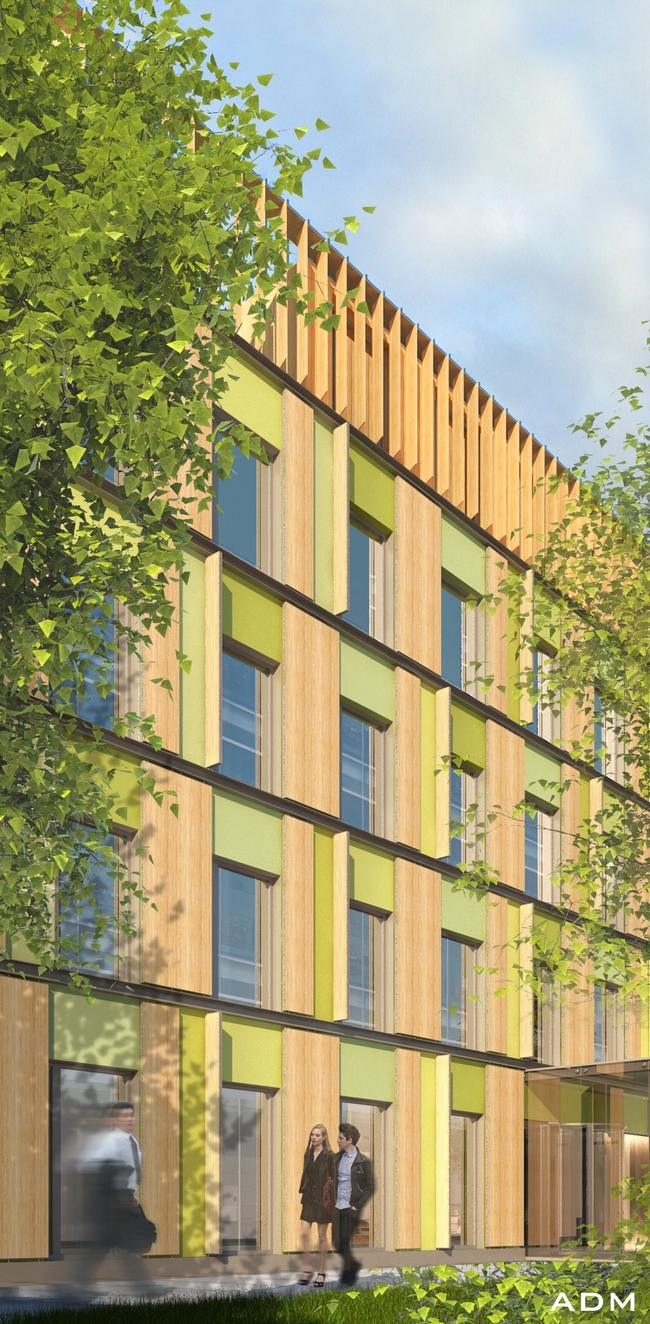
The floors are separated by horizontal belts of metallic l-beams. This
approach has already become the trademark sign of ADM architects. The metallic
stripes align the windows and panels into neat horizontal arrays and generally
organize the facade. This impression is enhanced by the vertical ALPOLIC slabs
that are fastened next to every other window perpendicular to the facade. Apart
from the aesthetic function, these elements, resembling open window shutters,
also serve as screens that provide protection from the slanting sunlight and create
the effect of the facade being actually 3D, adding to its lightness and
openness. In the upper tier of the building, similar panels form a tight grid
that masks the technical equipment and the maintenance floor.
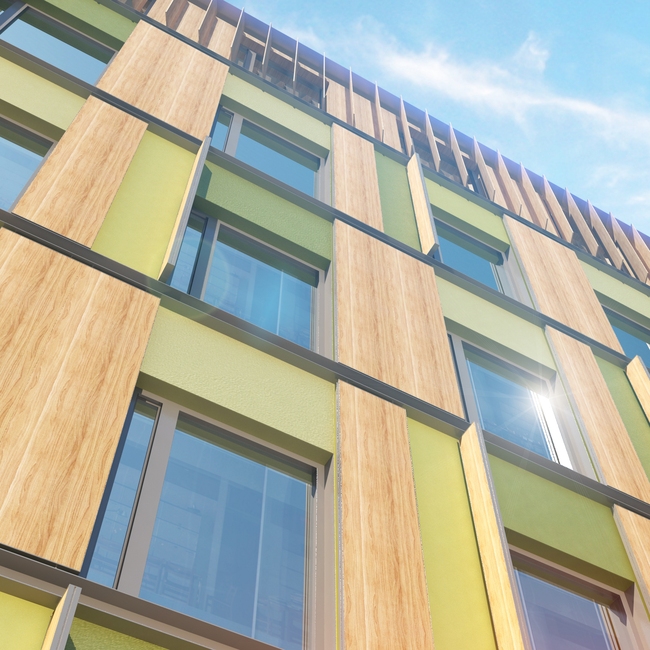
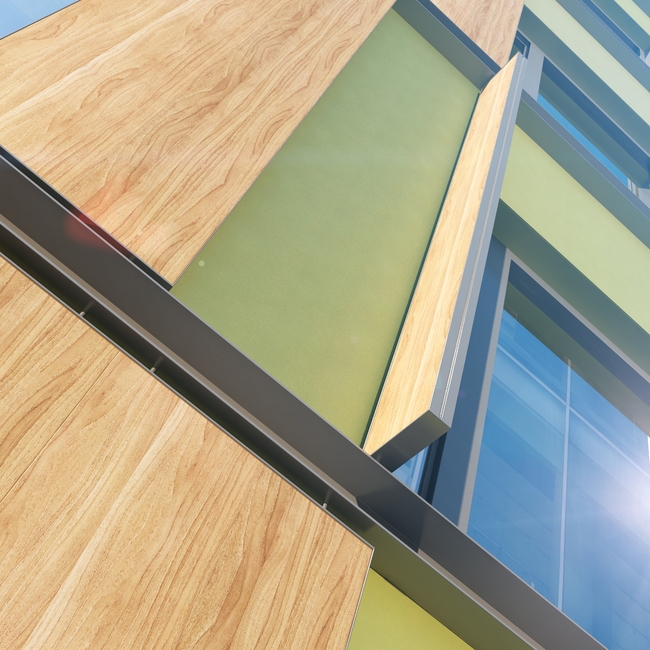
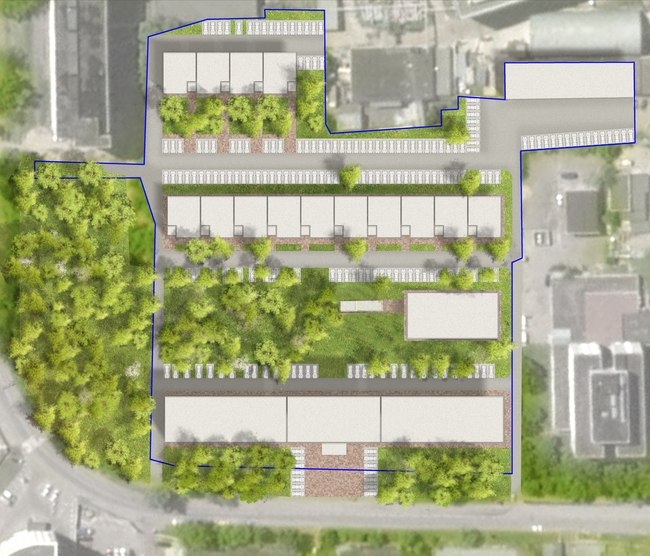
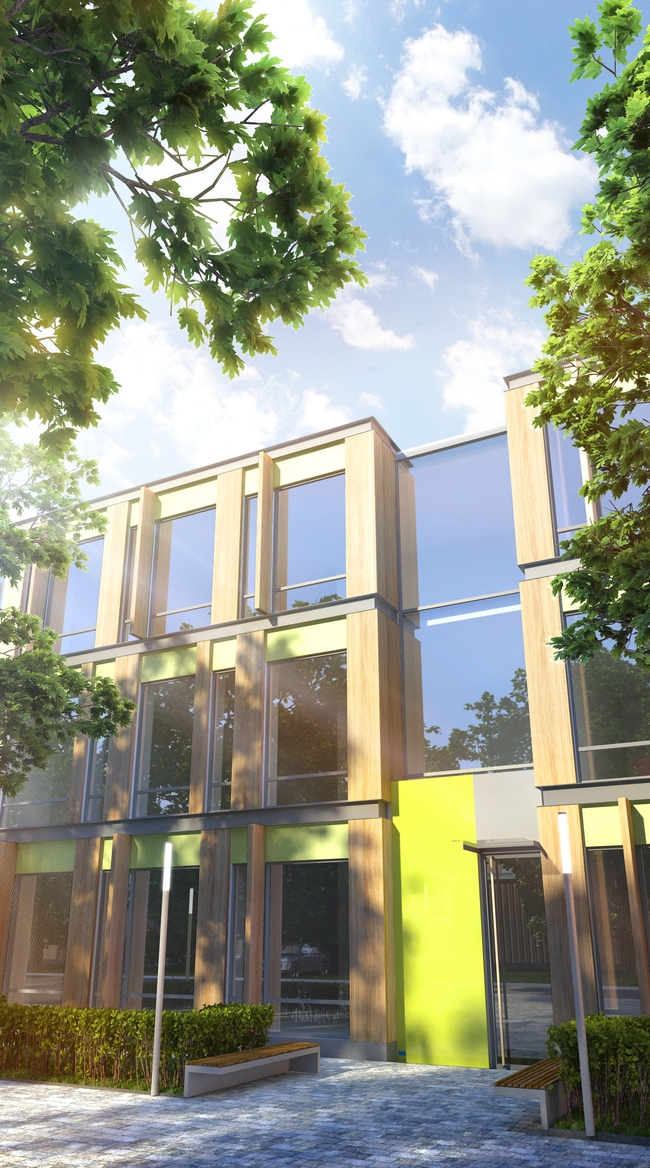
The other buildings of the business park are situated in the depth of
the site that, thanks to the abundance of trees and bushes, looks more like an
edge of a wood rather than the territory of a former research institute. Here,
according to the architects' plan, two rows of existing buildings were
renovated. As a basis for this project solution, the architects used their
favorite genre of "office townhouses" - ones that are grouped
together, each of them having an entrance of its own.
Being resonant with the "chamber" scale and the cozy situation
of the buildings inside the land site, these facades sport a more open look:
they have large panoramic windows, and between the "wooden"
espacements there appear extra glass panels. Thus the windows are perceived not
as a purely functional part of the building but become a part of the rhythmic
alternating of vertical stripes of glass and wood. The green panels blend into
a stripe that pierces the facades horizontally, in unison with the metallic
"rails" of the l-beams.
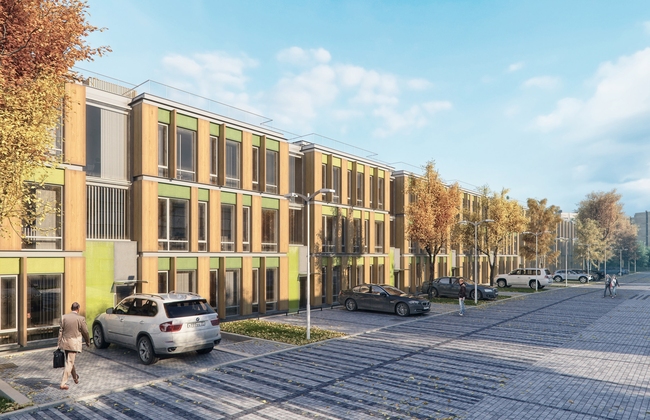
On the roof of these buildings, the architects have designed a whole
mini-park: wooden pavement, transparent railings, little tables, barbecue spots
and even full-size trees that grow out of the rectangular pedestal tubs. The
mini-park on the roof becomes the harmonious continuation of the green
territory of the business park. In the two-story building, the idea of "a
park within a building" is implemented in a slightly different way. Here,
the trees have "come down" from the roofs to the small stanzas
located in front of the offices.
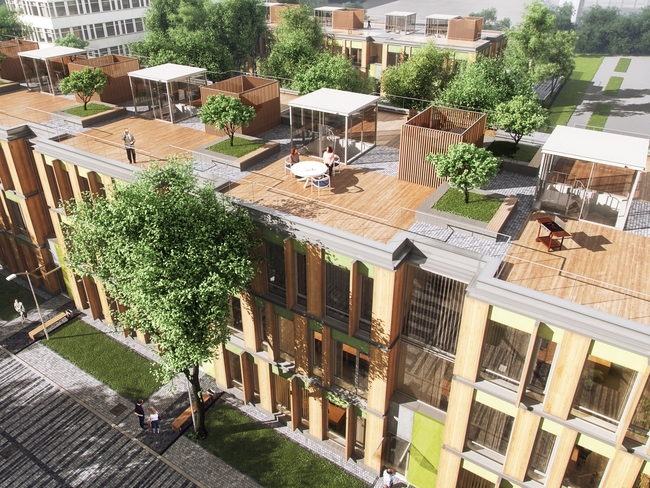
In fact it is the nature itself that becomes the centerpiece around
which the architecture of the business park congregates: the color of wood and
verdure, the glittering glass that reflects the trees, and the transparent
glass through which one can see the trees. The buildings either simulate their
natural surroundings or strive to melt into them.
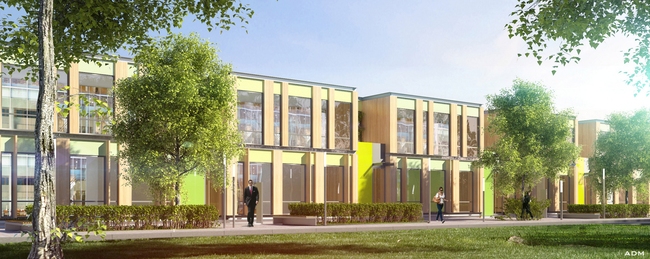
The space of the business park that practically "dissolves"
all of its buildings, will also get improved in the spirit of ADM architects
that pay a lot of attention to the landscaping part in their projects. It has
been decided to design the park in the English style - with the trees and grass
growing wild, most of which the architects will keep intact, adding some extra
ones. In the hot summer days, the natural green carpet will please the eye with
its freshness and openness, living up to its name - a business park, park being
the operative word.
